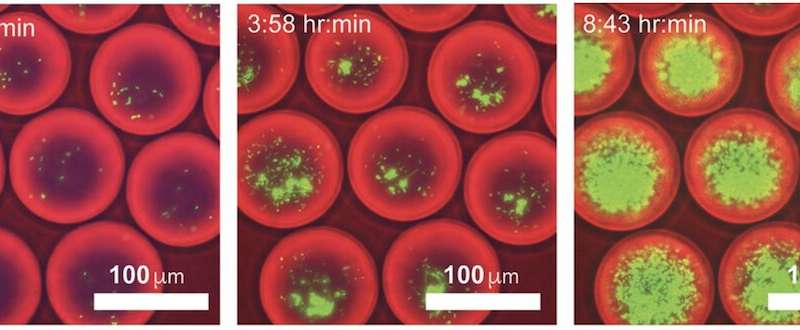
We know fiber is good for us and is an important part of our diet. One way to get more fiber in our diets is to take fiber supplements, and if we take fiber supplements, our microbiome is going to love us.
But do fiber supplements really make a difference to our microbiome? The fact is that everyone’s microbiome is different. Each of us has upwards of 100 different types of bacteria in our microbiome, and one person’s bacteria differs substantially to another person’s bacteria. Unrelated people share no more than 30% of the same bacterial strains.
The vast variety of bacterial strains found in the microbiome makes it challenging to study. To isolate all of the bacteria in just one person’s microbiome can take two months of work, and that’s before any experiments on those bacteria are even conducted.
To combat this issue, Lawrence David, along with now former David lab members Max Villa and Rachael Bloom, developed an experimental platform called MicDrop to culture and assay gut microbial function for hundreds of different microbes at once. This allows them to analyze dozens of the bacterial species in an individual’s microbiome in a single day. “We know that the gut microbiome is hugely important in human health,” Bloom said. “Having a way to measure how someone’s microbiome responds to a treatment—whether a drug, probiotic or prebiotic—is really important.” Their work was published in mSystems on June 30.
The platform uses bubbles to isolate bacteria. To make the bubbles, they mix the bacteria with water and oil. It’s a bit like salad dressing. When you shake salad dressing to get the oil and water to mix, you create bubbles, since water and oil don’t mix. In MicDrop, those bubbles encapsulate bacteria. “Because the bubbles are separate,” David said, “they actually end up being like little petri dishes.” The team can then grow the bacteria in those bubbles and run resulting culture material through DNA sequencer to discover what bacteria are in the bubbles and how many.
As a proof of concept, they measured how well bacteria were able to digest various dietary supplements available at the supermarket. “We didn’t know how the fiber supplements would affect different people,” David said. “We wondered if everyone has bacteria that can consume the supplement and if so, do they have a lot or a little?”
They used MicDrop to answer that question. They gave microbes a specially designed food source. Only the microbes that are able to grow on that diet will multiply. “Then we changed up the microbial culture medium to see which microbes could degrade this new dietary fiber,” Villa said. Each of the nine people they tested had bacteria that look like they could digest the supplements, but the number of these bacteria varied.
“Traditionally, microfluidics has had a home in engineering labs,” Villa said, “but our technique is simple enough for a broader audience of researchers.”
Source: Read Full Article
